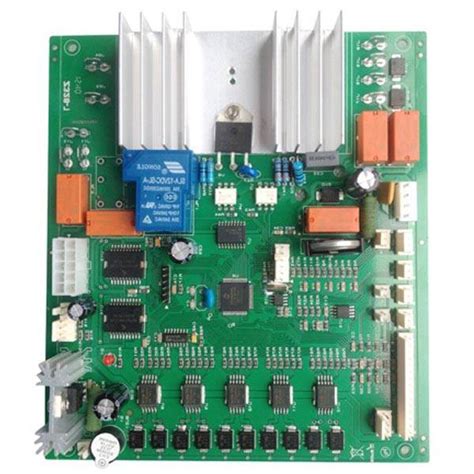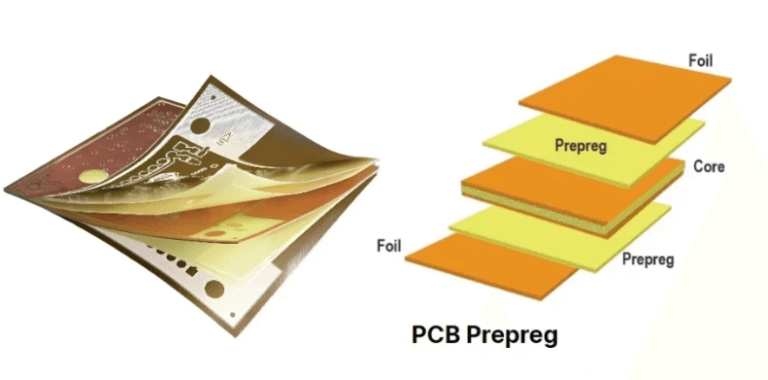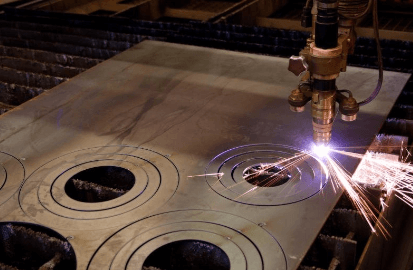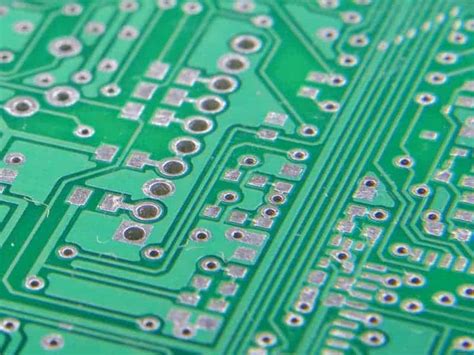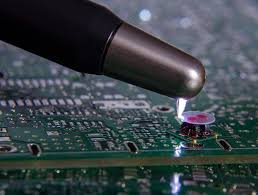Innovations in PCB Assemblies for Advanced Motherboard Functionality

Key Takeaways
The realm of pcb assembly is rapidly evolving, driven by the need for high-performance motherboard functionality. Recent innovations have significantly improved the efficiency and reliability of these pcba processes. One prominent advancement is the integration of automated fabrication systems, which enhance precision during assembly and reduce human error. Such techniques allow for tighter tolerances, critical for modern, compact electronic devices that demand space optimization.
Furthermore, advancements in design improvements have led to better thermal management within motherboards, addressing the challenges posed by increased processing power. Through effective layout strategies and heat dissipation techniques, potential failures due to overheating can be minimized. This is particularly important for applications in areas like gaming and data processing where performance demands are always on the rise.
Interestingly, the application of multi-layer pcb assemblies facilitates higher connectivity and functionality without compromising on space or weight — a vital requirement in today’s electronics landscape. The ability to incorporate additional pathways allows engineers to design more complex systems while maintaining integrity in performance. Additionally, the push towards integrating smart technologies, such as IoT sensors within pcba, presents exciting opportunities for developers to create more interactive and responsive devices.
"The future of electronics lies in seamless integration and intelligent design—elements that are becoming more prevalent with each advancement in PCB technology."
Lastly, as sustainability takes center stage across industries, eco-friendly materials in pcb production are emerging as pivotal components in enhancing motherboard functionality while addressing environmental concerns. Embracing these materials not only supports efficient production but also aligns with the global shift towards greener practices.
In conclusion, staying informed about these innovations in pcb assembly is crucial for professionals aiming to optimize motherboard performance while adapting to future challenges.

Innovations in PCB Manufacturing Techniques
The realm of PCB assembly is rapidly evolving, driven by the demand for greater efficiency and enhanced performance in motherboard technologies. Innovative manufacturing techniques are being adopted to streamline the PCBA process, improve reliability, and reduce costs. One such advancement is the implementation of automated assembly systems, which increase precision and speed in the placement of electronic components on printed circuit boards. This not only minimizes human error but also accelerates the overall production timeline.
Moreover, advancements in surface mount technology (SMT) have revolutionized assembly techniques by allowing for smaller components to be used without compromising performance. Utilizing multi-layer PCBs has become increasingly common, enabling engineers to design complex electrical interconnections within a compact form factor. As a result, manufacturers can achieve improved signal integrity and electrical performance, critical for modern high-speed applications.
In addition to automation and technology improvements, integrating advanced inspection systems has become essential to ensure quality control throughout the PCB assembly process. Techniques such as automated optical inspection (AOI) provide real-time feedback during fabrication, helping to identify defects early on, thereby reducing waste and increasing overall yield.
The combination of these innovations is driving manufacturers towards more flexible and adaptive production methodologies that not only enhance motherboard performance but also cater to the rising complexity found in today’s electronic devices. By focusing on these innovative manufacturing techniques, the industry is well-positioned to meet future challenges while achieving optimal performance in its products.
| Manufacturing Technique | Benefits |
|---|---|
| Automated Assembly Systems | Increases precision; accelerates production |
| Surface Mount Technology (SMT) | Enables smaller components; enhances design |
| Real-time Inspection Systems | Ensures quality; reduces waste |
| Multi-layer Circuit Boards | Improves signal integrity; saves space |

Key Design Improvements for Enhanced Motherboard Performance
The realm of PCB assembly and motherboards has witnessed significant advancements that are pivotal for enhancing performance. One of the most notable improvements lies in the development of multi-layer configurations, which allow for increased component density while minimizing space. This not only enhances the electric connectivity but also significantly improves thermal management, reducing overheating concerns in high-performance applications.
Additionally, the integration of advanced materials in PCBA such as high-frequency laminates contributes to remarkable signal integrity and reliability. These materials are designed to support faster data rates essential for modern electronics, enabling manufacturers to create motherboards that satisfy the demands of contemporary computing tasks.
Furthermore, design improvements such as improved trace routing techniques optimally manage power distribution across the motherboard. By minimizing interference and maximizing current flow, these techniques contribute to overall system stability and efficiency. Techniques like via-in-pad have also become popular, allowing for more compact designs while ensuring that signal paths remain uninterrupted.
The utilization of automated assembly processes has revolutionized PCB assembly by enhancing consistency and reducing human error. This automation is crucial in producing motherboards with intricate designs that require a high degree of precision. As a result, manufacturers can offer products that not only perform better but also possess greater durability.
In summary, these enhancements in PCB assemblies, from innovative material choices to sophisticated design methodologies, play an essential role in driving the performance of modern motherboards forward. As technology continues to evolve, further innovations are anticipated, setting new benchmarks for efficiency and capability within the realm of electronics integration.
Exploring Multi-layer PCB Assemblies for Advanced Functionality
The landscape of electronics has evolved dramatically, primarily due to advancements in PCB assembly techniques. Among these, multi-layer PCBAs stand out as a transformative solution that enables complex electronic functions within compact designs. Multi-layer assemblies consist of several layers of circuitry, interconnected through vias, which significantly boost performance while conserving space. This allows for the integration of advanced features, such as higher signal integrity and reduced electromagnetic interference, crucial in today’s high-speed applications.
As the demand for more sophisticated and smaller devices grows, the use of multi-layer PCB assembly has become essential. Manufacturers can achieve greater functionality without compromising on size or efficiency. By utilizing cutting-edge materials and ingenious design practices, engineers can create PCBA solutions that are not only compact but also optimize thermal management and facilitate easier assembly processes.
Furthermore, the incorporation of dynamic technologies like flexible circuits into multi-layer designs enhances adaptability and versatility. This represents a significant step forward in consumer electronics, enabling smart devices that respond more rapidly to user interactions while maintaining overall reliability. As industries continue to push the envelope with innovative applications in medical devices, automotive systems, and communication tools, multi-layer PCBAs hold the key to unlocking next-level functionality across various sectors.
Embracing these advancements not only sets the stage for superior products but also positions manufacturers at the forefront of technological evolution, ensuring they remain competitive in an ever-changing marketplace. The future promises even more developments in PCB assembly, heralding a new era where intricate designs yield unparalleled efficiency and performance.
Integrating Smart Technologies into PCB Assemblies
The integration of smart technologies into PCB assemblies has revolutionized the way modern motherboards operate, significantly enhancing their functionality and performance. As devices become increasingly interconnected, the demand for advanced PCB assembly solutions has surged. Smart technologies, such as the Internet of Things (IoT) and artificial intelligence (AI), are now being seamlessly integrated into PCBA processes to create more efficient and responsive electronic systems. By utilizing sensors and communication modules within pcb assemblies, manufacturers can enable real-time data exchange and processing capabilities, allowing motherboards to adapt to varying operational conditions dynamically. Furthermore, advanced manufacturing techniques facilitate the reduction of space while increasing functionalities; for instance, the adoption of smaller components leads to more compact designs without sacrificing performance. The increased complexity also calls for innovative testing methodologies that ensure reliability and quality assurance throughout the production process. In essence, leveraging smart technologies elevates PCB assembly processes to a new level, ultimately shaping the future landscape of high-performance motherboards that cater to an ever-evolving technological environment.

Future Trends in PCB Design for High-performance Motherboards
The landscape of PCB assembly is continuously evolving, driven by the demand for high-performance motherboards that cater to modern technological needs. One significant trend is the adoption of advanced materials, which enhance thermal conductivity and mechanical strength, optimizing the pcba for demanding applications. Furthermore, the integration of multi-layer PCB assemblies is becoming more prevalent, allowing designers to incorporate complex circuits without increasing the footprint. This not only improves signal integrity but also supports the functionality required in sophisticated devices such as servers and graphics cards.
Another noteworthy trend is the move towards smart technologies. Incorporating sensors and intelligent components within PCB assemblies allows for real-time monitoring and adjustments to performance metrics. Additionally, this integration facilitates features like power management and fault detection, essential for maintaining system efficiency during operation.
The emphasis on eco-friendly materials in PCB production is another significant development. Manufacturers are exploring sustainable practices that reduce environmental impact while still achieving high performance. These innovations not only align with global sustainability goals but also appeal to a market that increasingly values eco-conscious products.
In conclusion, as technology progresses, so does the complexity and capability of pcb assembly designs. Staying ahead in this rapidly changing field will require ongoing innovation and adaptation to new materials, multi-layer configurations, smart technologies, and sustainable practices to ensure optimal functionality and efficiency in future motherboards.
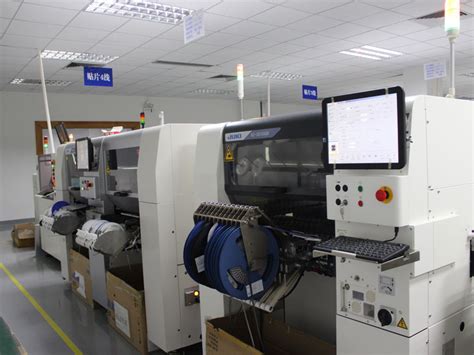
Eco-friendly Materials in PCB Production
The transition towards eco-friendly materials in PCB assembly is a significant development that addresses both environmental concerns and performance standards. Traditional printed circuit board (PCB) manufacturing often involved materials that are harmful to the environment, such as certain types of resins and metals. By shifting to biodegradable substrates and using lead-free solders, the electronics industry is making strides in sustainability while maintaining necessary performance levels. The adoption of green PCB materials not only reduces the ecological footprint but also aligns with regulatory requirements, making it an essential aspect of modern pcba processes. Materials like laminates obtained from recycled sources and coatings derived from non-toxic compounds are now being incorporated, leading to improved safety profiles for both manufacturers and end users. Furthermore, these innovations facilitate easier recycling at the end of a product’s life cycle, supporting a circular economy model. This combination of enhanced functionality and environmental responsibility ensures that the future of PCB production is not only advanced but also sustainable. Ultimately, as technology evolves, the integration of eco-friendly materials stands out as a crucial factor in achieving high-performance motherboards without compromising our planet’s health.
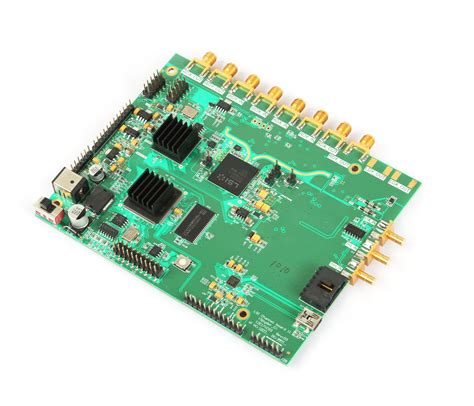
Cost-effective Solutions for Efficient PCB Assemblies
The ever-increasing demand for high-performance electronics necessitates that manufacturers explore cost-effective solutions in pcb assembly processes. One such approach is the utilization of automation technology, which enhances production efficiency while reducing labor costs. By integrating advanced robotics and software into the production line, companies can achieve higher precision and speed in their pcba processes, resulting in reduced error rates and lower overall expenses.
Moreover, adopting modular design strategies plays a pivotal role in optimizing PCB assemblies. By designing components that can be easily swapped or upgraded, manufacturers can minimize waste and maximize resource efficiency. This approach not only cuts down production costs but also aligns with sustainability goals in electronics manufacturing.
Additionally, leveraging local suppliers for materials helps reduce shipping costs and lead times, making the entire supply chain more efficient. Collaborating with regional partners allows companies to maintain a balance between quality and expense, ensuring that each pcb assembly meets stringent performance standards without exceeding budgetary constraints.
Investing in innovative software solutions for design and testing phases also offers significant cost benefits. Advanced simulation tools can identify potential issues early in the design process, thus minimizing costly iterations down the line. Such proactive strategies ensure that every aspect of pcba adheres to specifications before production begins.
All these elements highlight how companies can navigate the complexities of modern electronics manufacturing while seeking effective avenues to reduce costs without compromising quality or performance in their PCB assemblies. By embracing innovation at every level—from design to execution—manufacturers position themselves favorably in a competitive market fueled by relentless technological advancement.
Conclusion
In summary, the innovations in PCB assemblies (also known as PCBA) are driving significant enhancements in motherboard functionality. By harnessing cutting-edge techniques and materials, manufacturers are pushing the boundaries of what is possible in electronic design. The transition to more complex multi-layer pcb assemblies is a prime example, allowing for greater connectivity and improved signal integrity, which is crucial for high-speed applications. Moreover, the integration of smart technologies into pcba processes not only enhances performance but also promotes better energy efficiency through optimized power management solutions.
As we look to the future, the trend towards eco-friendly materials in pcb production presents an exciting opportunity for sustainability without compromising on quality or performance. These developments signal a pivotal shift towards greener practices within the electronics industry. Furthermore, cost-effective solutions are continuously being sought to ensure that these advanced assemblies remain accessible to manufacturers of all sizes.
Emphasizing these trends underscores an industry committed to leveraging technological advancements for better performance and efficiency. The collaboration between innovative design and practical implementation in pcb assembly techniques will undoubtedly shape the landscape of electronics integration moving forward.
FAQs
What is a PCB assembly?
A PCB assembly, often abbreviated as PCBA, refers to the process of soldering electronic components onto a printed circuit board (PCB) to create functional electronic devices.
How does PCB assembly impact motherboard performance?
The quality of PCB assembly significantly influences motherboard performance by ensuring proper connections, reducing signal interference, and enhancing durability, all of which contribute to the overall efficiency and reliability of the system.
What innovative techniques are used in modern PCB assemblies?
Modern PCB assemblies utilize advanced techniques such as surface mount technology (SMT), through-hole technology, and automated assembly processes that improve precision and reduce manufacturing time.
Are there eco-friendly materials used in PCB assemblies?
Yes, there is a growing trend towards using eco-friendly materials in PCB assemblies, such as lead-free solder and substrates made from biodegradable materials, which help reduce environmental impact.
What are the future trends in PCB assembly technology?
Future trends in PCB assembly technology include increased integration of smart technologies, such as IoT capabilities and embedded components, which are anticipated to greatly enhance the functionality of motherboards.

